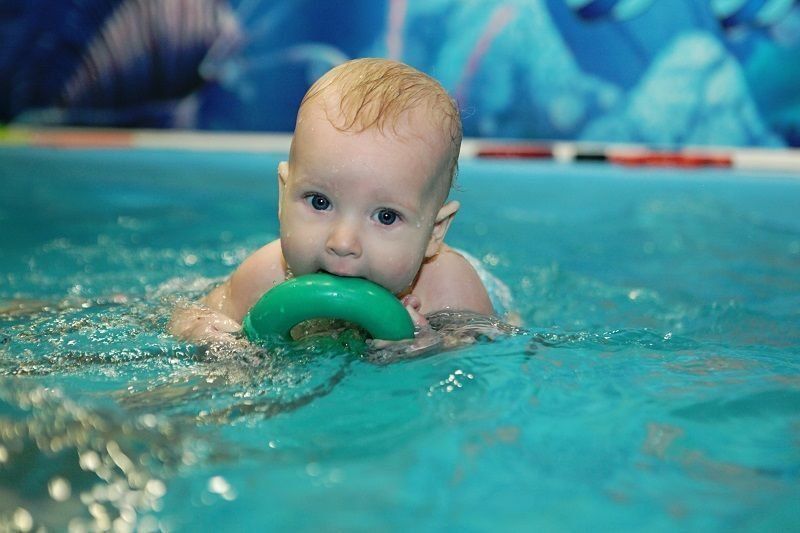IPhone from China: Huawei Nova 3E - Advantages and Disadvantages

March 2018 turned out to be fruitful for the middle and budget smartphone classes. Take at least a resurrected ruler Desire from HTC... So the company Huawei has pleased with its new product from the middle class Nova 3E. This Chinese brand has long been popular in the Russian market due to its practicality, reliability and low cost. By releasing smartphones of completely different classes: from flagship solutions to models of the budget segment, they remain true to their principles. And lately, Huawei has also been extremely prolific, releasing new phone models almost every month.
Specifically, this model Huawei Nova 3E, called in the Russian segment P20 Lite, turned out to be very controversial. Someone is scattered in compliments, someone strongly scolds the novelty for the discrepancy between the price and the filling. In addition, some specifications may differ depending on the market for which the device is produced. Let's try to figure it all out.
Equipment
Let's traditionally start with the contents of the box. It contains:
- Power supply unit for charger for 9 volts and 2 amperes;
- Regular on-ear headphones;
- The silicone case is a pleasant surprise from the Chinese, which will be useful for a phone with a glass back panel;
- Clip for a SIM card tray and microSD slot;
- USB TypeC cable.
For the Russian market, the kit includes an adapter for a charger for Russian sockets.

Design
The device looks nice and elegant. Shines and shimmers in the sun, which gives it even more grace. Actually, this is the hallmark of all glass phones. And he refers precisely to such. On the front and back of the case, there are 2.5D tempered glass panels. They are connected with a metal frame.
On the back of the phone, in addition to the glass panel mentioned above, there is a dual camera and a fingerprint scanner.
The front part is almost completely occupied by a screen with an aspect ratio of 19: 9. With this aspect ratio, at first glance, the phone has no frames at all and seems to smoothly transition from screen to body. At the top of the screen there is a cutout, popularly (and not only) called a monobrow. It houses the front camera, earpiece, sensors and event indicator.
Despite the widespread dislike of users for the monobrow, here it fits very well into the design. It is small, despite the significant number of elements placed on it, and is not particularly striking. In addition, using a special setting, you can darken the top of the phone so that it is not so noticeable.
There is nothing on the top panel except a noise canceling microphone. At the bottom there is a multimedia speaker, an earpiece microphone, an input for USB TypeC and a 3.5 mm headphone jack. A volume rocker and a button for unlocking were placed on the right side. On the opposite side there is a hybrid slot for two SIM cards. One of which, if desired, can be replaced with microSD. Actually, to say that this is a Dual-sim phone in its pure form will not work.
The dimensions of the phone are: Width - 71.2 mm, in height it stretches by 148.6 mm, while its thickness is only 7.4 mm, and its weight is 145 grams.
With ergonomics, everything is fine with him, except for the fact that glass phones slide slightly in the hands, but here even a silicone case is initially provided for this. The device fits well in the hand, it is comfortable to hold, and due to its low weight, it is hardly felt during use.
The phone came in four colors: Classic black, gold, pale pink and futuristic blue, which we find the most impressive.
Display
The display of this device occupies almost the entire front part, is 5.84 inches and has a resolution of 2280 by 1080 pixels.
Very high quality display with excellent IPS matrix. The screen reproduces colors beautifully. Specifically, 96% of the NTSC color space. I would like to thank FHD + for excellent detailing. Blur and pixelation are impossible to see anywhere.
From any angle, the picture remains clear, bright and rich. It casts a little blue, but for this there are special settings that allow you to adjust the color gamut.
The screen has a large margin of brightness, so any information will be perfectly visible on it in any weather, even if the sun's rays fall directly on the display.
In general, the display is not inferior to the flagship models of its own company, such as, for example, the Honor 10.
Among other things, the phone has a 10-touch multitouch.
Main characteristics
Let's quickly go through the main characteristics of the phone, so that you have an idea of what kind of model it is, and then we will analyze them in detail.
| Main characteristics | Huawei Nova 3e |
|---|---|
| Net: | GSM, WCDMA, FDD-LTE |
| Platform: | Android 8.0 Oreo, EMUI 8.0 firmware |
| Display: | 5.84 ", 2280 x 1080 pixels, 432 ppi, 2.5D glass, LTPS |
| Camera: | two sensors, main: 16 MP, f / 2.2, LED flash, 6-lens optics, video recording 1080p, additional: 2 MP |
| Front-camera: | 24 MP, IMX578, f / 2.0, 1080p video recording |
| CPU: | 8 cores, up to 2.36 GHz, Kirin 659 |
| Graphics chip: | Mali-T830MP2 |
| RAM: | 4 GB |
| Inner memory: | 64/128 GB Two SIM slots (hybrid) |
| Memory card: | microSD up to 256 GB |
| Navigation: | A-GPS, GLONASS, Beidou |
| WI-FI: | Wi-Fi (802.11a / b / g / n) |
| Bluetooth: | 4.2 BLE, aptX |
| Fingerprint scanner: | there is |
| Battery: | built-in, 3000 mAh |
| Dimensions: | 148.6 x 71.2 x 7.4mm |
| Weight: | 145 g |
Sound
The multimedia speaker in the phone is quite loud. All played content is well audible, but the sound lacks depth due to the almost complete absence of low frequencies. It's nice to see that the manufacturer didn't forget to include a 3.5mm headphone jack. By the way, the sound is heard well through the headphones, but nothing more. The sound chip in the processor is quite ordinary, without any peculiarities
But the earpiece and communication modules are excellent here. You can always hear your interlocutor perfectly, and he also always hears you well. This is a nice feature of all Huawei smartphones. This model was no exception.
CPU
The 8-core Kirin 659 processor with a frequency of 2.362 GHz launches all this beauty into action and keeps it working. It is used in mid-range phones from Huawei. It is usually used for models around $ 300. It is often compared with the qualcomm snapdragon 625 and even the snapdragon 660. However, the comparison with the 625 will be more correct, since it is obviously inferior to the 660, despite the seemingly the same power in megahertz.
Kirin 659 is equipped with the Mali-T830 MP2 graphics accelerator, it is ahead of Adreno in terms of performance, but adreno runs at a higher FPS, which allows it to show better results in games.
The Mali-T830 MP2 does a fairly high number of operations per second and does a good job of multitasking. However, it consumes more power than the same Qualcomm with its Adreno. This undoubtedly affects the battery life of the phone.
This smartphone is not particularly convenient for active games.Despite not the worst performance on AnTuTu, equal to 87,000 points, its graphics accelerator is still not suitable for games. Heavy and demanding games like World of Tanks or PUBG mobile will work fine only on minimal settings.

Memory
Depending on the model, the phone has 64 or 128 GB of internal memory. You can also insert a microSD card up to 256 GB into the hybrid slot. Again, it is a little unpleasant that there are only 2 slots.
The RAM in this model is an impressive 4GB. The manufacturer has definitely not deprived of RAM in its new creation. Combined with a processor tailored for speed and multitasking, you can definitely not worry about the speed of the firmware.
Camera
One of the features of the phone is a 24 MP front camera with f / 2.0 aperture and a wide viewing angle of 78 degrees. In addition to a fairly high resolution and a rather impressive aperture for a front camera, it is also notable for the fact that it has the latest Sony IMX576 sensor.
This is the very first smartphone on the market with such a sensor. It captures 20% more light from objects, and thanks to it, the camera can reduce noise in photos by 33% and improve color rendition by 26% compared to older sensors.
Also in the settings section when the photo mode is selected, a beauty mode is available, which allows you to automatically retouch a photo. Despite this, the camera clearly lacks detail, and when the beauty mode is on, the photos turn out to be unnatural. By the way, this effect persists even when it is completely turned off.
The rear camera is not as impressive compared to the front camera. It consists of two sensors: a 16 MP main sensor with 6-lens optics and a not very good f / 2.2 aperture, which makes the photos look not clear enough. An additional 2MP sensor is used to create a bokeh effect when shooting.
During the day, the pictures from the camera are not bad enough, however, in insufficient light, and even more so in the dark, their quality drops sharply. There is no stabilization in the camera, which is why the photos are blurry, and the autofocus does not always work as it should. It is better not to use the bokeh effect achieved by software, because it looks very bad.
The camera can shoot video in FullHD, however, due to the lack of stabilization, the picture twitches, which noticeably interferes with shooting.
You can see how the cameras take pictures on examples:




Low-light shots look something like this:

Battery
This telephone is powered by a 3000 mAh non-removable battery. This amount of charge, despite the energy-consuming processor and bright screen, is enough for a day of battery life with active use.
When watching videos from Youtube via Wi-Fi turned on at half brightness, 11-12% of the battery takes an hour. When the Internet is off, the charge consumption is reduced by 2%.
With an average load, the phone can survive a day and a half without recharging.
And in standby mode, the battery practically does not drain.
For better energy saving, the phone has a Smart Resolution mode. When this setting is activated, the phone automatically switches the resolution down to save power.
Software and shell
The software part is made on Android 8.0 with a proprietary shell EMUI 8.0.
The system looks pretty nice, the icon shortcuts are preserved, the work with notifications is well implemented. The system works smoothly and stably. During tests, you can sometimes notice twitching of the animation, but this is rather an exception. Nevertheless, the system can hardly be called fast, unless at the very beginning of use.
There is an interesting choice between two types of desktops:
- All icons are scattered across the desktops;
- A button appears on the screen that opens a list of all applications in alphabetical order.
Sensors and additional functions
GPS works flawlessly, keeps the connection stably. You definitely don't have to be afraid that he will let you down at the wrong moment. There is also GLONASS support.
Of the sensors, there is only a standard kit, which contains everything you need: an accelerometer, a light sensor, a proximity sensor and a compass.
Although there are not many of them, they work accurately and reliably.
The fingerprint scanner has never crashed during the tests and is quite fast and without any lag.
The function of unlocking by face is also implemented here. The face scanner does not work as fast as the biometric one, but it is still quite fast.
It is worth mentioning that it will be very difficult to use it in the dark, but nothing prevents you from turning on the parallel operation of both sensors.
Price
In terms of price, the phone is notable for the fact that its price at the start of sales varied greatly from region to region. So, for example, in Russia it cost about 30% cheaper than in Ukraine. However, by September, prices had generally stabilized across all regions. Except perhaps Kazakhstan.
Belarus - 620/750 rubles for 64/128 GB, respectively (310/375 $).
Russia (P20 Lite) - about 20,000 rubles ($ 290).
Ukraine (P20 Lite) - about 8,500 hryvnia ($ 300).
Kazakhstan (P20 Lite) - approximately 126,000 tenge ($ 335).
- An excellent bright screen with a remarkable IPS matrix and high resolution. The colors are bright and rich, the image is perfectly visible from any angle.
- There is an NFC function that allows you to pay with your phone instead of a card.
- Beautiful design. Although the phone looks like an iphone, its design is more than attractive. The back glass panel shimmers beautifully in the sun, and in general the phone looks impressive, especially the ultramarine blue color.
- Good firmware. The firmware works quickly and clearly. Most likely you will not notice those small brakes that were during the test.
- Poor gaming performance. The 3D processor accelerator is absolutely not intended for games, so it is convenient to play only at low graphics settings.
- The cameras fell short of expectations. Despite the manufacturer's strong statements about a cool front camera with a new sensor, the pictures from it are so-so, and the rear camera is even worse. Although during the day she shows herself quite well.
- A small drawback is the lack of oleophobic coating, as a result of which the phone gets dirty quickly.
Output
Considering all of the above, it is worth noting that the phone is generally good. If you are not a fan of playing games and are not going to take professional pictures with your phone, this can be a good purchase. The firmware works quite quickly and clearly, and there should be no problems with non-gaming applications.
new entries
Categories
Useful
Popular articles
-

Top rating of the best and inexpensive scooters up to 50 cubic meters in 2024
Views: 97661 -

Rating of the best materials for noise insulation for an apartment in 2024
Views: 95022 -

Rating of cheap analogues of expensive medicines for flu and colds for 2024
Views: 91750 -

The best men's running shoes in 2024
Views: 87680 -

Top ranking of the best smartwatches 2024 - price-quality
Views: 85091 -

Best Complex Vitamins in 2024
Views: 84801 -

The best dye for gray hair - 2024 top ranking
Views: 82406 -

Rating of the best wood paints for interior use in 2024
Views: 77202 -

Ranking of the best action cameras from China in 2024
Views: 75269 -

Rating of the best spinning reels in 2024
Views: 74827 -

The most effective calcium supplements for adults and children in 2024
Views: 72462 -

Top rating of the best means for male potency in 2024 with a description
Views: 68296









